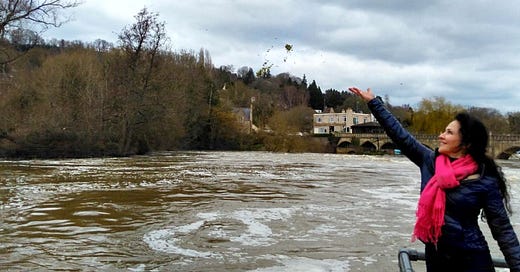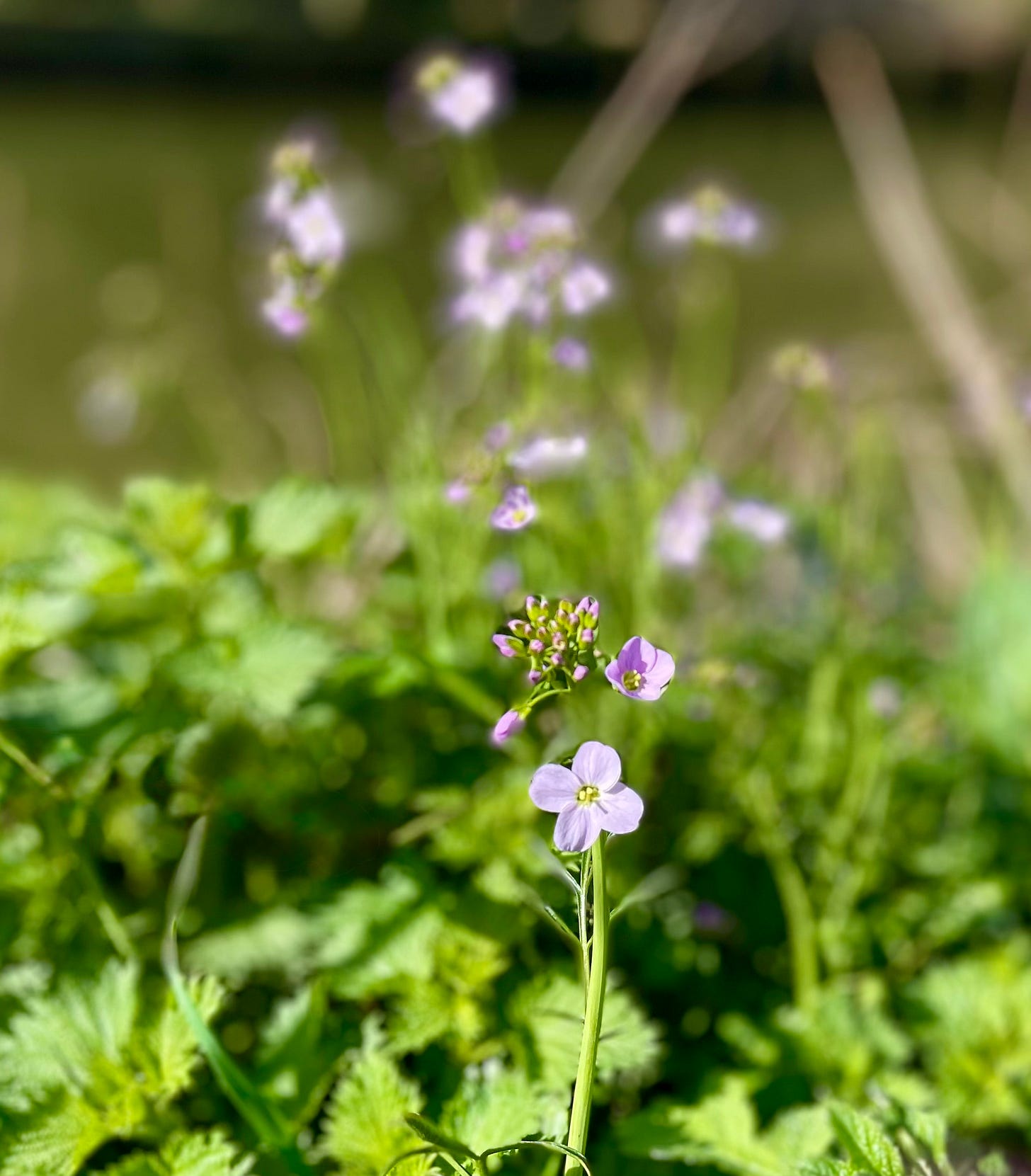No wonder my ancestors gathered for al fresco festivities at this time of year. The energy in nature is palpable: bees are buzzing, our wren has been busy making nests, hoping one will be acceptable to a female, and newts are getting jiggy in the pond. Over the last month, the garden’s colours and soundscape have transformed, shifting from grey-brown to lush green, with blossoms and birds in the trees and flowers on the ground. Magnolia, forsythia, blackthorn, and plum trees are in bloom (all edible flowers and leaves). The daffodils are fading, making way for tulips and bluebells to sprout up among the primula. On woodland walks, there’s the delicious scent of wild garlic. So-called weeds, along with many other small, nutritious plants like hawthorn tree leaves, nettles and dandelions, are now available to eat.
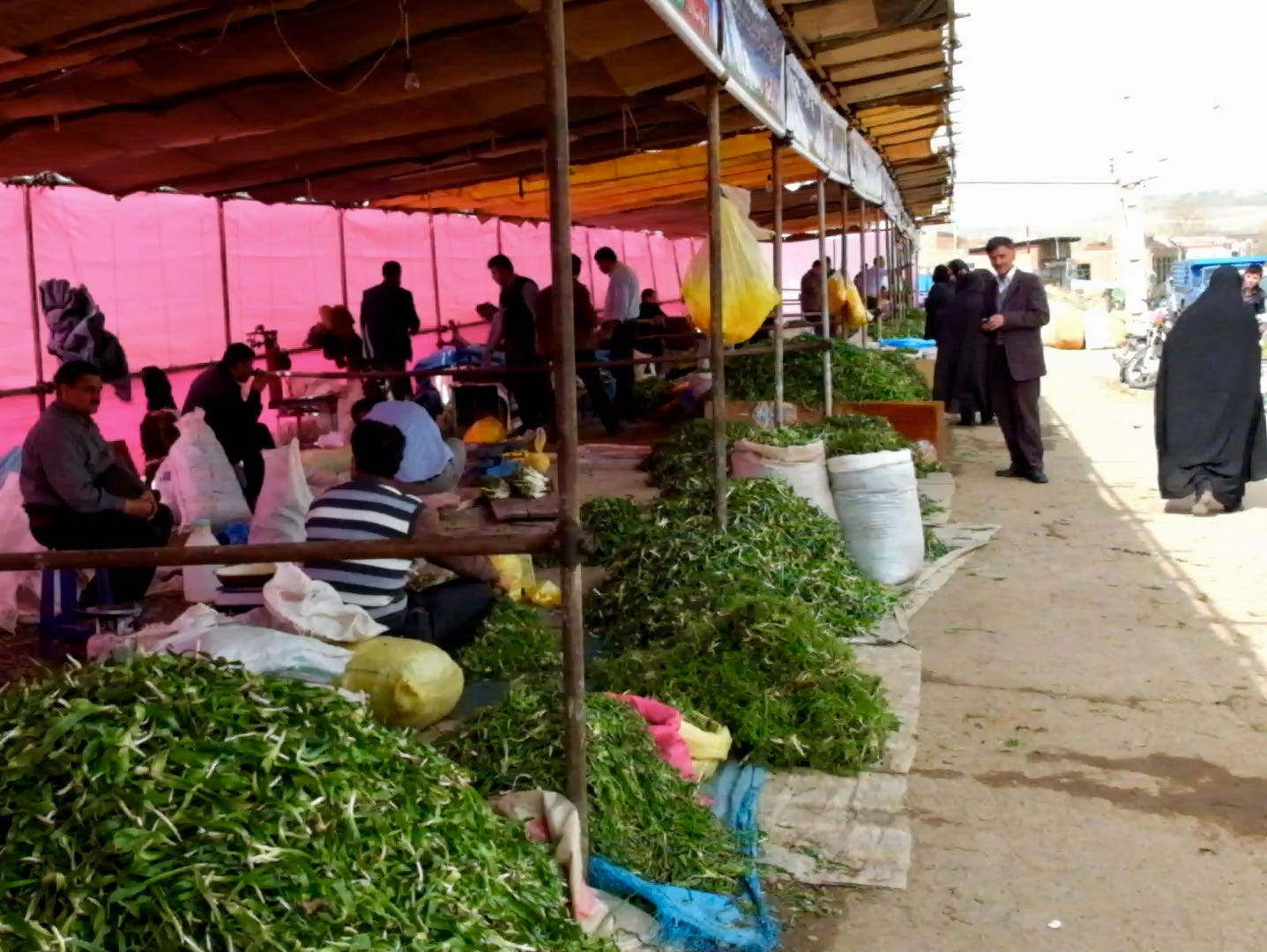
To conclude our Nowruz Bayram celebrations in Iran, there is a relatively modern tradition known as Sizdah Be-dar, which is a national holiday on the thirteenth day of the first month of the year Farvardin, which was Wednesday. On this day, we dismantle the table laid out for tahvil and take the sprouted greens, often placed on the bonnet of a car, for a day out in nature with an elaborate picnic. Essentials for this day include food, drink, games, and Bluetooth speakers for music. Any green spot is acceptable, whether in a private garden (bogh), a park, or even a roundabout at a busy intersection. Eating, drinking, playing games, dancing, and general gaiety are the order of the day.
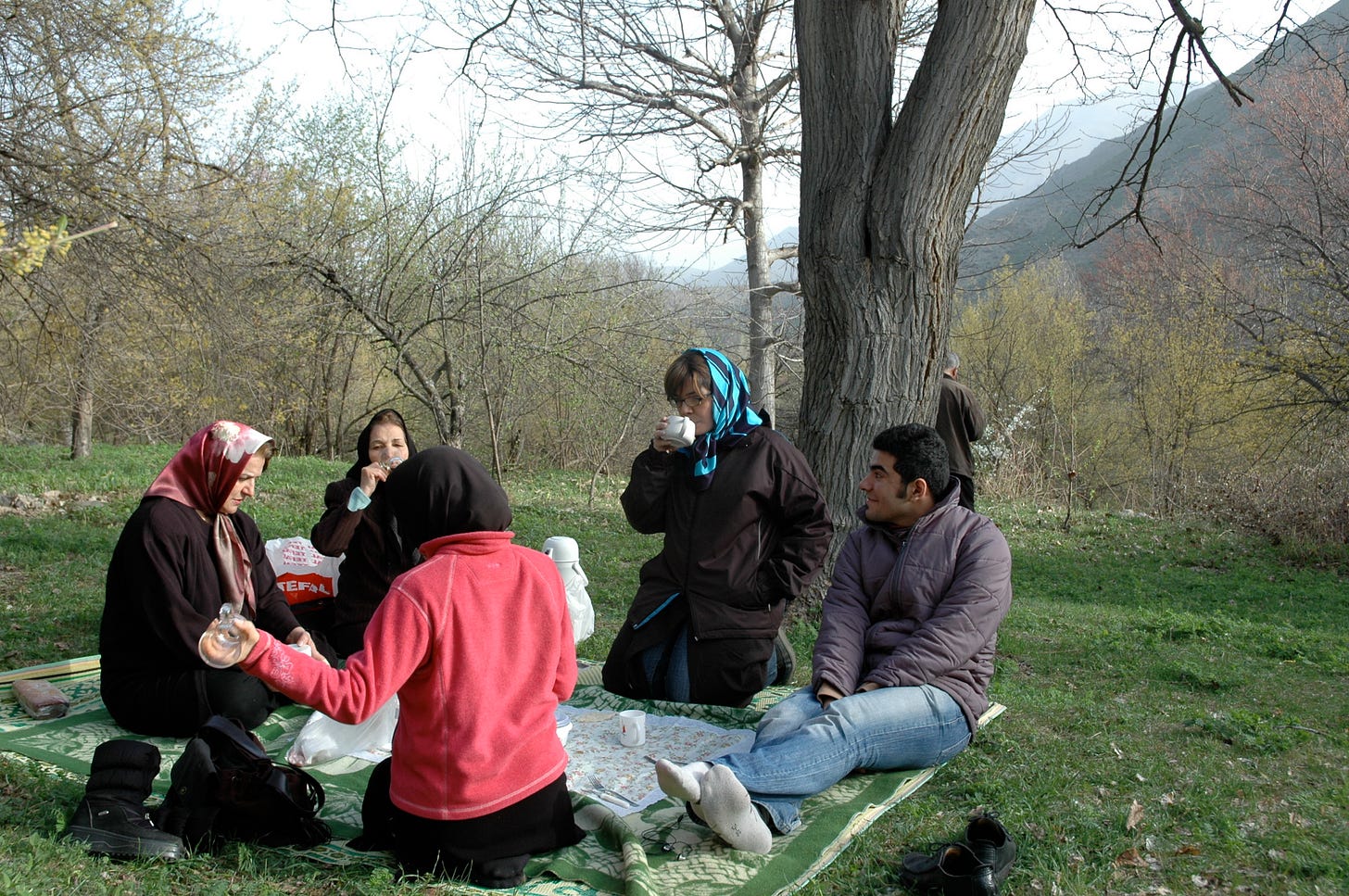
Years ago, when we went to our bogh on Sizdah be dar, we took everything with us, not quite the kitchen sink, but certainly a coal samovar. There would be a line of us, like ants, each carrying our own body weight in edibles and home comforts. The samovar was setup first for brewing tea with water from the crystal clear cheshma in the bogh - which is now dry. The tea was always served in cute little glasses on pretty saucers, with hand-cut sugar pieces stored in gatdan or china bowls with lids to keep flies at bay.
Here is a film from 2014 visit to the bogh in late April.
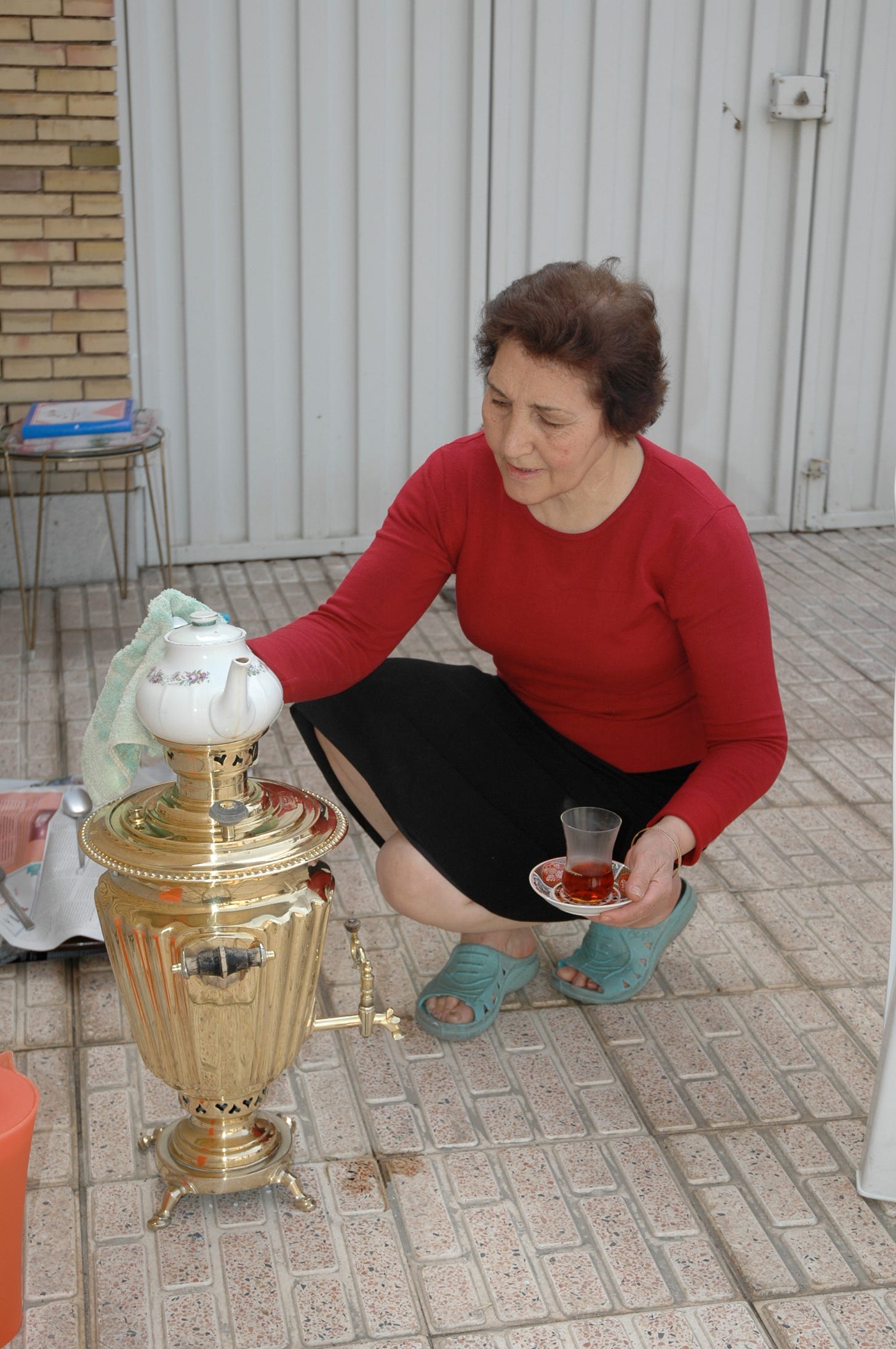
Picnic stoves were lit for turbaned rice pots and khurush, a slow-cooked vegetable and meat braise, while fires were made for chabob. One of my cousins would make fresh salad, another would set the sufra with cutlery, crockery, bread, and yogurt, ready for lunch.
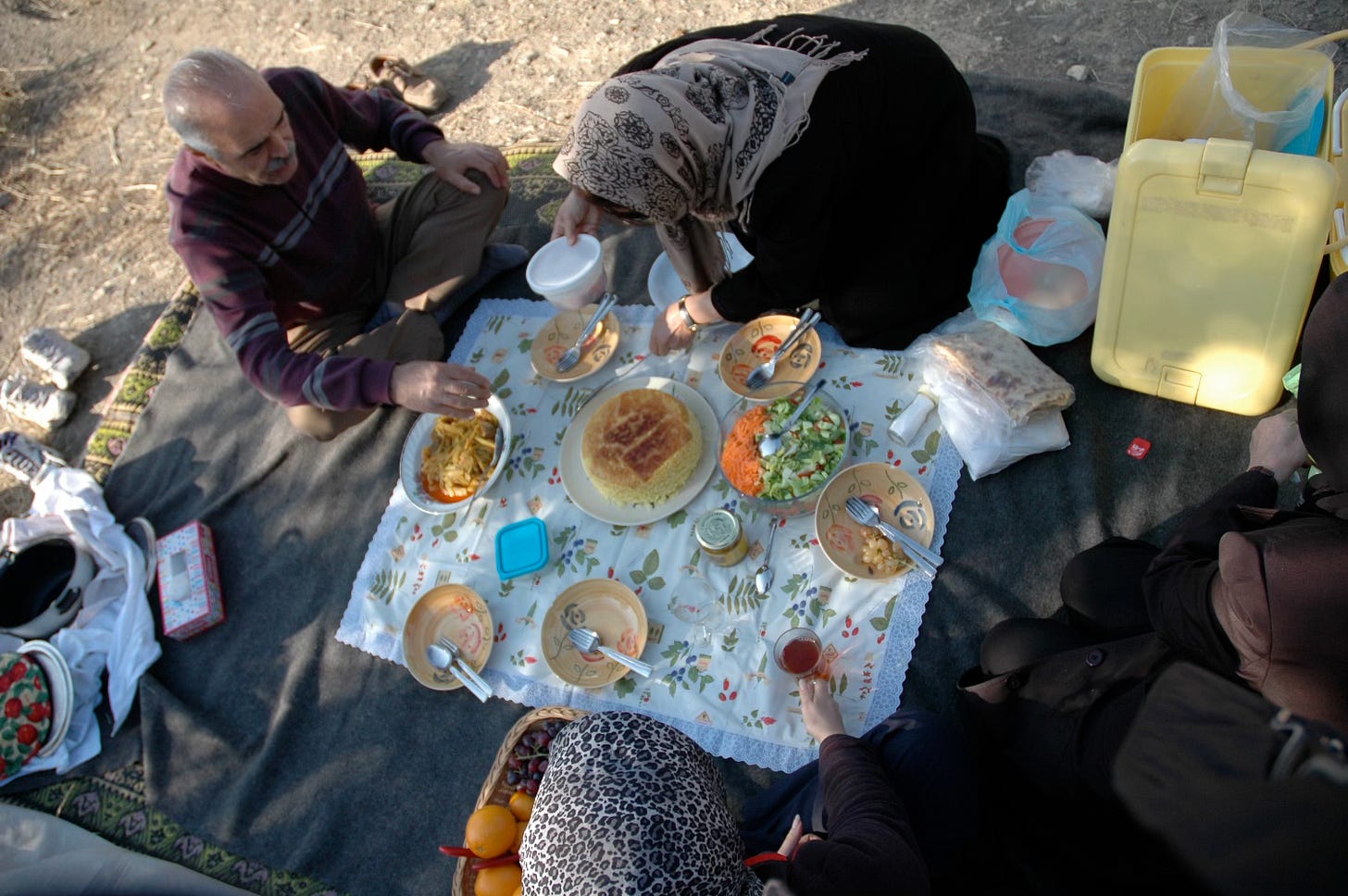
Another popular picnic dish at this time of year is joy chuchisi, a mixture of sozi (a type of chive), walnuts, and barberries bound together with a little egg, eaten in a sandwich with lavash-style flatbread. A couple of years ago, I grew a lawn of chives, which I used to make joy chuchsi for 250 people at the Oxford Symposium of Food. It was my pleasure to share this delicious dish as part of my lunch on the theme of Rules & Rituals.

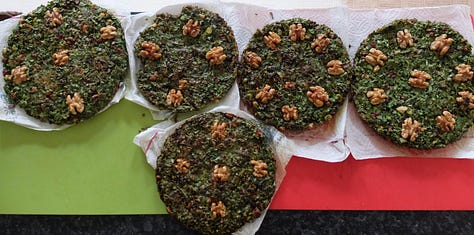
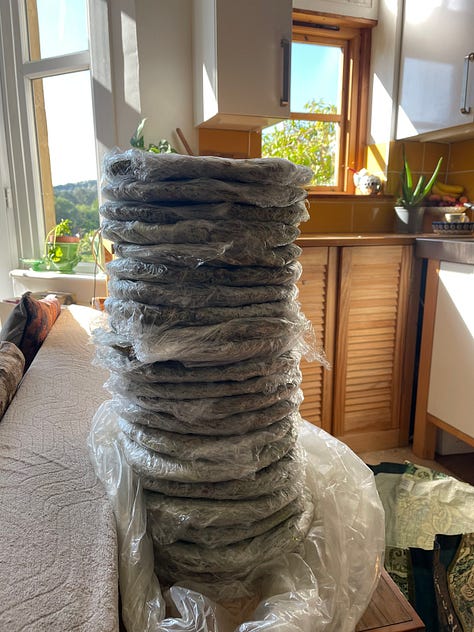
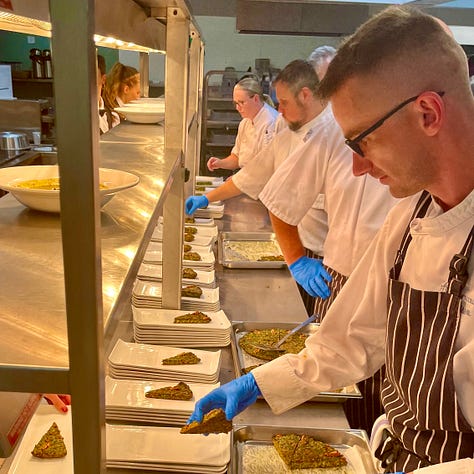

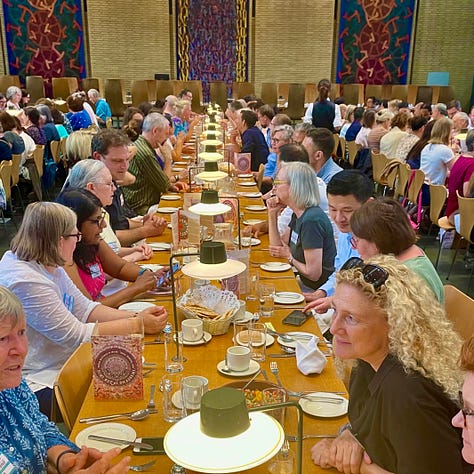
After lunch, those partying in public might set up little tents for women to “let their hair down”, without headscarves or to take a siesta. Upon waking, it’s time for tea, cakes, fresh and dried fruit, nuts, and games be it word games, netball or dancing. In our bogh we usually collect greens, herbs for food and to make tisanes and flowers to take home.
In Iran, picnicking is a national sport. I can’t tell you how excited I get at just the thought of a picnic. I have specific picnic gear, from beautiful enamel tiffin boxes, to a variety of flasks, for water, tea, coffee or soup. While the picnics I take to my allotment or on road trips aren’t quite as grand, they are just as rich.
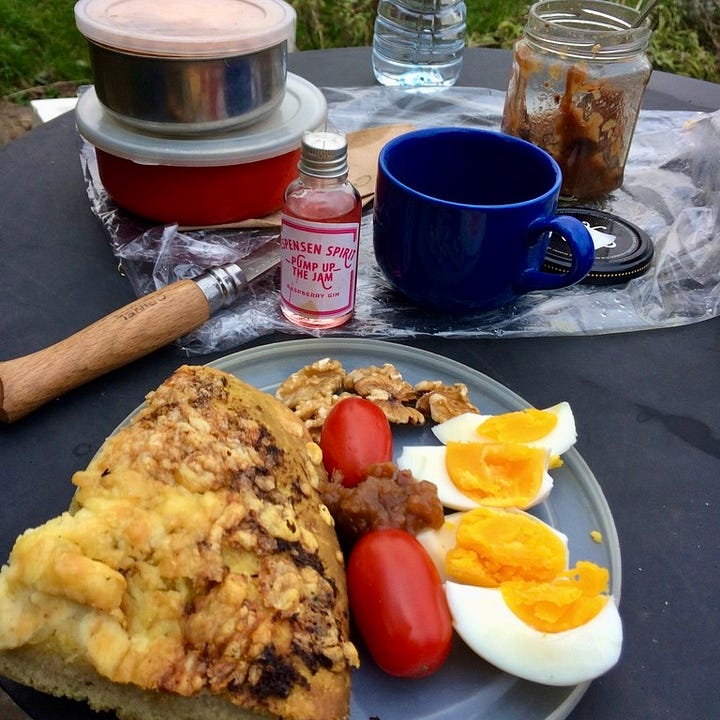
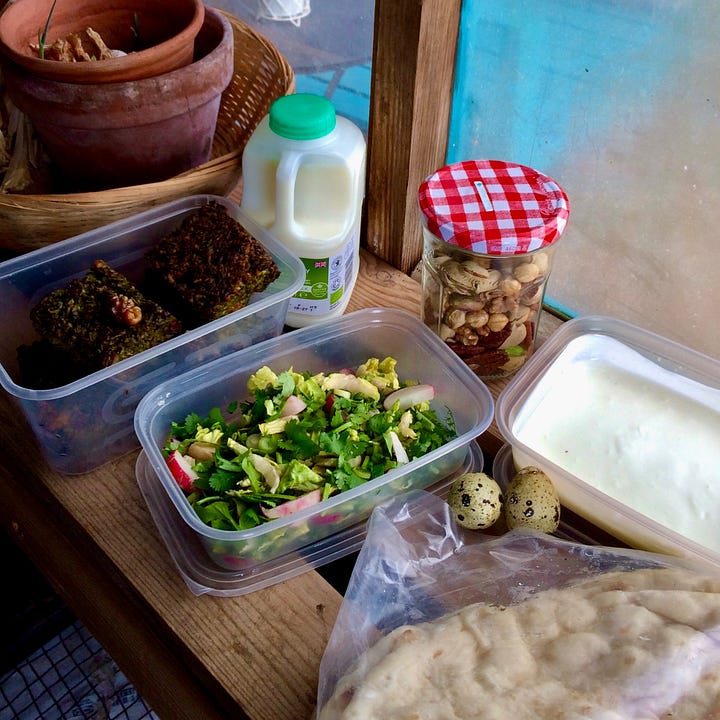
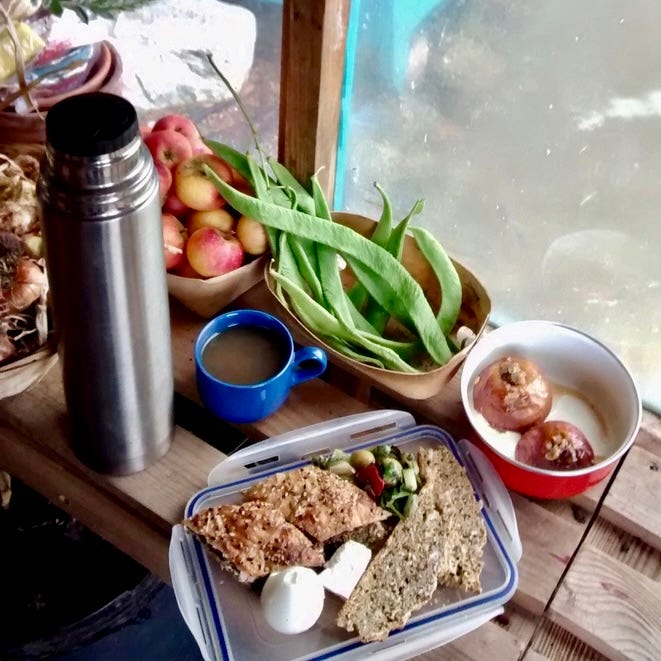
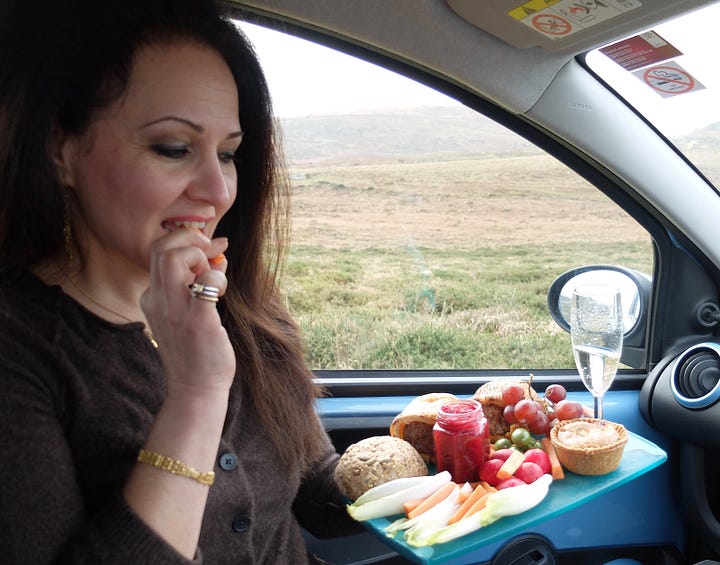
On Wednesday (which was the 13th), our friends and family gathered in a bogh in the foothills of the Sahand Mountains for a bring-and-share lunch, organised via social media (to ensure variety, unlike last year when we ended up with five yerchochi pilow, carrot rice).
I referred to Sizdah Be-dar as a "modern tradition" because it is now commonly interpreted as 13th on the other side of the door, or 13 being unlucky, keeping bad luck outside the home. However, it wasn’t always this way. Some historians believe the phrase originally derived from dareh (which could mean 13th in nature), not dar (meaning door).
Every society has its own set of superstitions; it is a human trait. Observing patterns in our lives and surroundings, we try to make sense of them. Some repeated observations became beliefs and, over time, evolved into traditions, often with associated rituals. These customs could be tied to joyous celebrations or to serve as protective or coping mechanisms. Regarding the number 13, now associated with bad luck, some say the superstition arose in Iran during the Safavid era (1501 to 1736) due to increased exchanges with Westerners, who considered the 13th unlucky others, say it was adopted after the arrival of Islam in Iran.
I couldn’t find historical evidence of 13 being unlucky in this region. What I did find was 13 was seen as more awkward than unlucky because it is a prime number. Similarly in the West, monks struggled when putting together calendars in years with 13 full moons. However it originated, 13 remains unlucky in Iran, addresses often skip the number, just as some Western buildings lack a 13th floor or corresponding elevator button in lifts.
In an earlier post in this series, I mentioned that we didn’t always use the same names for days and months as we do now; instead, we followed seasonal patterns. Interestingly, in ancient times, the 13th day of the month was known as Tir Day, a day to honor Tishtar, the god of rain. A special festivity for this deity, known as Tirgan, takes place in July, or “water fight day” as I like to call it. This is a recurring theme in the beliefs of the area on having sky gods or associating rain and water with bounty. Celebrations on this day could have been a form of rain dance to encourage a fruitful harvest rather than unlucky.
Moreover, soon after this celebration comes the observance of Farvardingan, which, in the Zoroastrian faith, is a day to honor the dead. Since they didn’t have cemeteries, this would have been a day spent in nature. Perhaps there are remnants of that tradition in celebrating outdoors. Whether it was on the 11th, 12th, 13th, or 14th day of the new year, around this time people began venturing outside when they saw life and warmth returning to their environment, earlier in warmer regions and later in higher altitude?
In the northern hemisphere at this time of year we have certain weather patterns which are increasingly unreliable. In the UK, there are April Showers; in Japanese microclimates, it is known as Distant Thunder; and in Azeri, we say Naisanlar, the month of rains.
On a recent foraging walk, I heard an old English saying: "Ne’er cast a clout till May is out". We also came across the beautiful, mustardy Lady’s Smock or Cuckooflower. These old sayings and names remind us of how we once lived in closer harmony with our environment. They provided knowledge of birds, seasonal foods, weather patterns, and the tasks to be done. In the case of English names and sayings I just mentioned it was also a time to frolic in the flowers with it being warm enough to disrobe and apparently the flowers look like a cast off lady’s smock!
Speaking of plants, the sprouted greens we grow are now commonly cast into flowing water to make wishes come true or rid oneself of ill will. In the past, they would have been planted out. Singletons tie a knot in them before throwing them in, a tradition thought to be linked to ancient marriage customs. In English, we also say “tying the knot” to symbolise union. You can imagine that in popular picnic spots, these greens can clog waterways, and the rubbish left behind is not quite in keeping with the spirit of the festival.
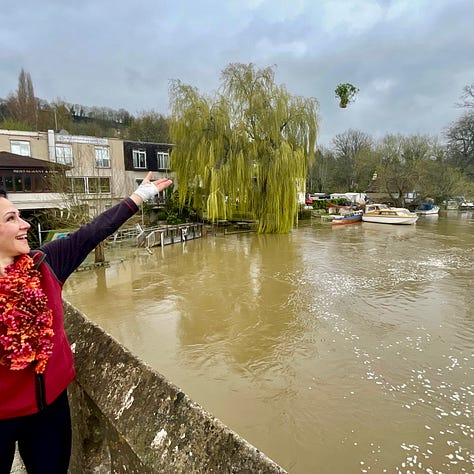
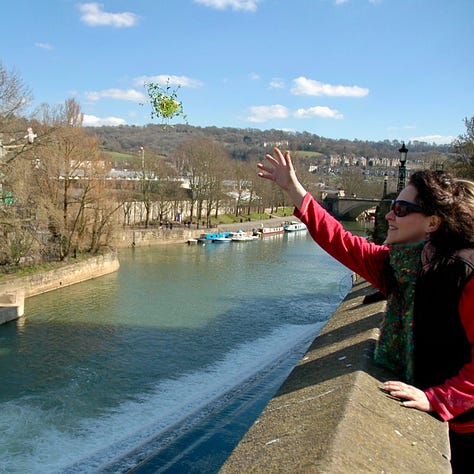
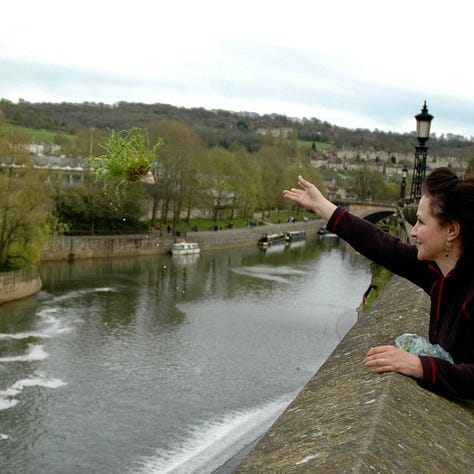
This video is from 2022 when we had heavy rains and the Avon was running high.
Every year, I sprout lentils because I like their dainty leaves, and I cast them into flowing water. This year, I also sprouted broad beans, garlic, and onions to put in the garden. Having researched for this article, I decided to post this newsletter after casting my greens today on the 15th of the new year instead, when I my friends were free to join me.
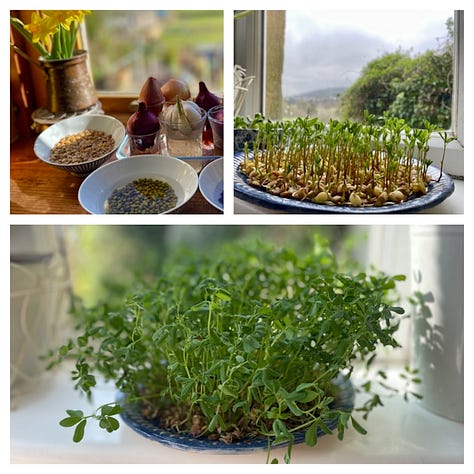
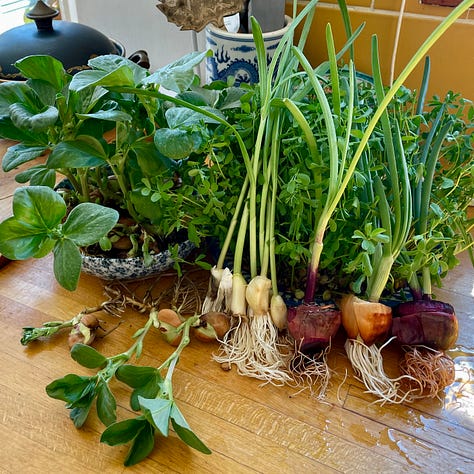
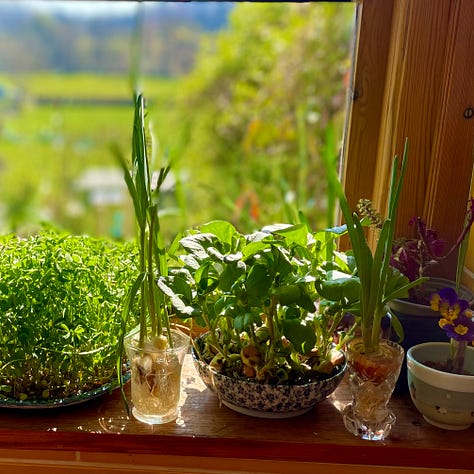
Before I go, I have my own sort of “bad luck” story from Sizdah Be-dar: four years ago, we went to throw the sabzi into the River Avon by our local weir. Unbeknownst to me, as I posed for a photo, my phone slipped out of my pocket and into the water. Later, when reviewing the pictures, we saw the moment it fell! But it turned out to be lucky after all, I’d been using a hand-me-down for 10 years, and this mishap finally prompted me to get a new one.
All this greenery and sunshine also mean that animals produce more eggs and milk, making it the perfect time for processing dairy, a topic I explore in my forthcoming book, Fermented Dairy of Central Asia.

